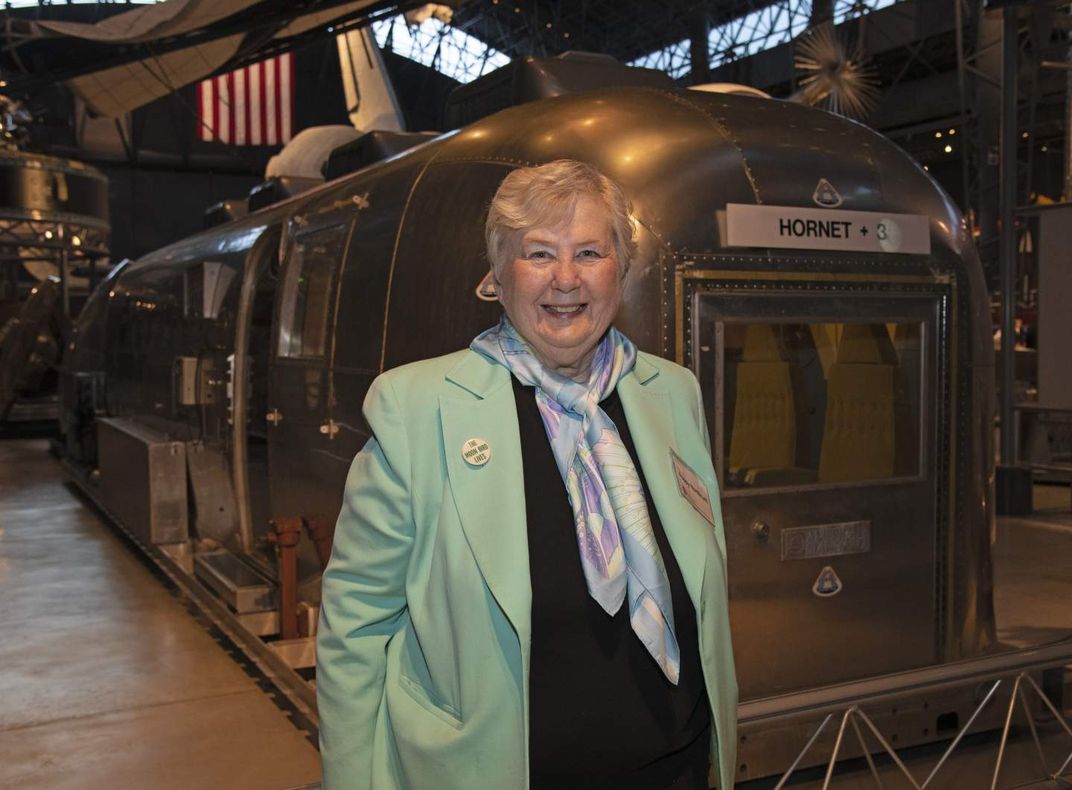Calculating Trajectories and Breaking Boundaries During Apollo
In the late 1960s, Poppy Northcutt was a return-to-Earth specialist with TRW, working on a contract with NASA on one of the most exciting adventures of the 20th century: humanity’s quest for the Moon. With computer programming skills and a degree in mathematics, she worked with her team at TRW on the development of the return-to-Earth program. “Mainly I worked on developing return-to-Earth trajectories that would be used when they were in the vicinity of the Moon,” Poppy said in a recent phone interview. “It was designed from the get-go to be a program that would calculate in real-time a return to Earth—whether you are talking about good circumstances or bad.” When NASA accelerated the schedule for Apollo 8, the first mission to orbit the Moon, it meant that development of a critical part of that mission, the return-to-Earth software, would need to be accelerated as well. Before launch, the software needed to undergo testing and the flight controllers needed training on the program. To meet the deadline, Poppy was assigned to work in the Mission Control center directly with the retrofire officers, becoming the first female engineer in Mission Control.
/https://tf-cmsv2-smithsonianmag-media.s3.amazonaws.com/blogging/featured/IMG_3854.jpg)
In the late 1960s, Poppy Northcutt was a return-to-Earth specialist with TRW, working on a contract with NASA on one of the most exciting adventures of the 20th century: humanity’s quest for the Moon. With computer programming skills and a degree in mathematics, she worked with her team at TRW on the development of the return-to-Earth program.
"Mainly I worked on developing return-to-Earth trajectories that would be used when they were in the vicinity of the Moon," Poppy said in a recent phone interview. "It was designed from the get-go to be a program that would calculate in real-time a return to Earth—whether you are talking about good circumstances or bad."
When NASA accelerated the schedule for Apollo 8, the first mission to orbit the Moon, it meant that development of a critical part of that mission, the return-to-Earth software, would need to be accelerated as well. Before launch, the software needed to undergo testing and the flight controllers needed training on the program. To meet the deadline, Poppy was assigned to work in the Mission Control center directly with the retrofire officers, becoming the first female engineer in Mission Control.

When reflecting on the experience of being in the middle of such a historic space program at a relatively young age, Poppy recounts the pressure felt by her and her team: "We were working really enormous hours because being in the control center was not something we were expecting to do… It was sort of daunting to be over there, and then at the same time, we were under a great deal of pressure doing the testing, the testing, the testing… Flight safety, as far as I was concerned, was always number one."
And at the same time, Poppy was dealing with the reaction of those around her that there was a woman in Mission Control. During simulations for Apollo 8, she kept hearing other flight engineers talk about a particular channel, asking others if they had seen what was on it. "So I pulled it up, and it was a camera that was just focused on me," Poppy said. "I knew that I was obviously the odd duck of the bunch, that I did not look like everybody else. I knew that, but I really wasn't expecting to be that kind of an object of curiosity." Being the only woman felt like people’s eyes were always on her—literally.
And this feeling was compounded by the fact that Poppy wasn’t very aware of other women working in the program at the time: "I knew there were a few women here and there but I didn't know who they were, I didn't know what they were doing."
Being the only woman in mission control also meant that Poppy was thrust into the spotlight. She was interviewed for TV and print and encountered a lot of sexism: "People have asked about the sexism that was at NASA in general in terms of work, and there certainly was sexism in that place, but the sexism of the media was also very apparent. They were always very focused on what I looked like, what I was wearing. It was just really sort of irritating."
If being in Mission Control was a new experience for Poppy, so was being in the public eye. And despite the media’s intention to focus on her looks or her clothes or the way men reacted to her presence in the control room, Poppy had another mission in mind. She was determined to use this public attention to show the world—women and girls, but also men and boys—that women could have these jobs too and were fully capable of doing the work. One of the best parts of her experience as a public figure was the reaction from young girls: "I got letters from girls from all over the world, and many of them said things like "I didn't know that girls could do this, I didn't know that women could do this." I really felt a lot of gratification from that."
While many Americans might say that Apollo 11 is the mission that most sticks out in their minds, for Poppy Northcutt, that distinction goes to Apollo 8. That mission is vivid in her memory because it was the first time she was over in Mission Control, and because the mission itself was so ambitious. This was the first time humans had left Earth as the major gravitational force and traveled to the Moon. And it was the first time the software she and her team worked on had been used on a mission. "It was something I had worked on for years," she said. "And to have it used for the first time—that mission to me was definitely the most memorable."
